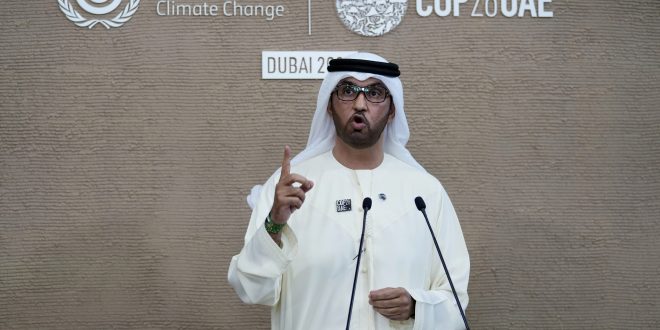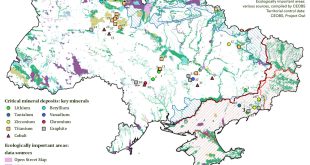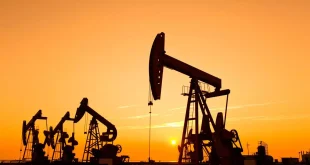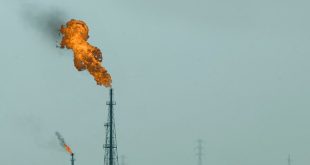The United Arab Emirates has decided to leverage its immense wealth to bring about a green revolution, but staying the path will require an enduring commitment.
As increasingly devastating climate events underline the need to transition away from fossil fuels, the rapid and sustainable development of renewable energy resources has emerged as a focal point in the global discourse on sustainable development. The United Arab Emirates—particularly the largest and most powerful emirates of Dubai and Abu Dhabi—has advanced significantly in the field of renewable energy to meet the demands of a post-oil era. The UAE has expended significant sums to develop its nuclear and renewable capacity, with the overall goal of achieving carbon neutrality by mid-century. Prominent projects such as the Mohammed bin Rashid Al Maktoum Solar Park and the Barakah Nuclear Energy Plant exemplify the country’s dedication to diversification. However, major issues must be resolved. To fully embrace sustainable development, the UAE must mitigate the drawbacks of less reliable renewable green energy sources, improve energy storage capacity, and facilitate renewable energy’s smooth integration with the country’s existing energy grid.
A Defining Challenge
Embracing a green future represents a massive undertaking for the hydrocarbon-rich UAE. In 2022, the country exported roughly 2.7 million barrels of crude oil per day—a significant increase over the previous year. In 2022, the government’s budget surplus, anticipated to be about 5 percent of GDP due to oil earnings and strong economic activity, was aided by this spike in oil exports, as well as the rising global price of oil following Russia’s invasion of Ukraine in February of that year. Historically, the UAE’s economy has been supported by the oil industry. However, to lessen its reliance on fossil fuels, the nation has aggressively pursued an energy transition that will diversify its energy mix.
To satisfy its economic needs and environmental goals, the UAE’s Energy Strategy 2050 guidance document seeks to embrace nuclear, clean, and renewable energy sources. By 2050, the country’s leadership hopes to achieve a domestic energy mix of that consists of 44 percent renewable energy, 38 percent gas, 12 percent coal, and 6 percent nuclear power, according to the strategy. The country is making noteworthy progress in broadening its energy mix and promoting a sustainable and low-carbon future, despite its impressive success in the oil industry.
As part of its plan to attain net-zero emissions by 2050, the UAE has pledged to invest $54 billion in renewable energy by 2030, with the goal of tripling its capacity to 14 GW and generating 50,000 new green employment. Furthermore, the United Arab Emirates is prioritizing carbon capture technologies and augmenting its production of blue and green hydrogen. The National Hydrogen Strategy 2050 aims to establish the nation as one of the foremost hydrogen producers by the year 2050.
The UAE has positioned itself as a significant participant and influencer on the global stage by crafting innovative and sustainable energy policies and becoming a pioneer in the development and incorporation of clean energy technologies. Through its dedication to technological advancement and energy diversification, the UAE has set an example for others. The UAE’s global leadership in sustainable energy policy is evident through its deepening involvement in renewable energy projects outside of the Emirates’ territory.
Energy Strategy 2050
The UAE’s Energy Strategy 2050 lays out the country’s precise goals to eliminate carbon emissions. For instance, it calls for doubling renewable energy usage as a percentage of the economy’s total energy requirements, from 25 percent to 50 percent, by 2050, reducing the nation’s overall carbon footprint by 70 percent in the process. Energy Strategy 2050 also hopes to boost the economy and save over $190 billion by enhancing energy efficiency for both homes and businesses by 40 percent. To support these programs and help the economy flourish, the UAE has committed to investing approximately $160 billion domestically. More generally, the Energy Strategy 2050 also aims to encourage the use of renewable energy sources, nuclear power, and hydrogen, stimulate R&D, and invite capital to the renewable and clean energy industries—initiatives described below.
The UAE has committed to modernizing its energy environment through renewable energy sources, including solar and wind power. By 2030, Emirati renewable energy capacity is expected to triple to 14 GW. By 2031, the Emirati leadership hopes that 30 percent of the UAE’s energy mix will come from clean sources—a swift and significant uptick that would lay the groundwork for the country’s goal of reaching 50 percent by 2050. The UAE has spent substantial sums to develop its solar energy infrastructure. Indeed, the small Gulf state is already home to three of the biggest solar power facilities in the world, suggesting a dedication to the goals outlined in the country’s Energy Strategy 2050.
The UAE has significantly invested in solar energy infrastructure to align with its Energy Strategy 2050, which aims to increase renewable energy’s share to 44% in the country’s energy mix by 2050. Major solar facilities supporting this goal include the Mohammed bin Rashid Al Maktoum Solar Park in Dubai, which currently has a capacity of 2.6 GW and is set to expand to 5 GW, featuring a 950 MW hybrid solar energy complex. The Al Dhafra Solar Project in Abu Dhabi, with a capacity of 2 GW, became operational in November 2023, while the Noor Abu Dhabi Solar Plant (Sweihan) has been generating 935 MW since 2019. Collectively, these three plants provide over 5.5 GW of solar power capacity. Following the activation of the Al Dhafra project, the UAE’s total installed solar capacity surpassed 5 GW. Solar energy’s contribution to national electricity generation increased from 0.3% in 2014 to 4.5% in 2022, showcasing the UAE’s significant advancements in expanding its solar energy capabilities and advancing toward its renewable energy objectives.
Nuclear energy also plays an important role in the UAE’s sustainable energy strategy, and the country has made substantial progress toward making nuclear a pillar of the country’s energy transition. With four reactors in operation, the Barakah Nuclear Power Plant in western Abu Dhabi is a landmark project—the first-ever nuclear power plant on the Arabian Peninsula—that is expected to supply up to 25 percent of the UAE’s power needs. By 2030, the nuclear power station is expected to add an additional 14 GW of clean power to the UAE’s energy composition, effectively increasing the amount of clean energy produced in the UAE six-fold. The UAE’s decision to develop a civilian nuclear energy sector dovetails with its overarching objective of attaining net-zero carbon emissions by 2050. Incorporating nuclear power into the Emirati energy portfolio not only boosts sustainability, but also establishes the country as a regional and international leader in the adoption of cutting-edge, clean energy technologies.
Alongside more traditional clean energy resources, Abu Dhabi also seeks to cultivate the UAE as a leader in low-carbon green hydrogen production. The UAE’s National Hydrogen Strategy sets targets of 1.4 million tons per annum (MTPA) by 2031, 7.5 MTPA by 2040, and 15 MTPA by 2050. This strategy leverages the UAE’s position as a preeminent global energy hub, as well as its bountiful natural gas and solar resources. By leveraging the Hydrogen Innovation Fund to support developers, the UAE can more rapidly achieve its environmental goals.
Smart Investment Strategies
Two Emirati entities will play a key role in advancing the country’s attempts to achieve the goals of Energy Strategy 2050—the Abu Dhabi Future Energy Company, or “Masdar,” and the International Renewable Energy Agency (IRENA). Masdar, founded by the UAE government in 2006, promotes renewable energy development and the advancement, commercialization, and deployment of clean technologies to diversify the UAE’s economy and diminish its carbon footprint.
Masdar has become one of the world’s top investors in renewable energy, providing capital to over 40 nations to make the shift to cleaner energy. It is projected that Masdar’s initiatives will remove more than 30 million tons of carbon dioxide from the atmosphere annually, which is equivalent to taking 6.5 million automobiles off the road. Abu Dhabi’s sustainable urban development, Masdar City, is a prime example of Masdar’s dedication to renewable energy; this strategy includes rooftop photovoltaic (PV) installations and the first renewable energy facility in the UAE—the 10MW Masdar City Solar Power Plant.
Meanwhile, IRENA will certainly play an important role in empowering the UAE to make the switch to sustainable energy sources. While IRENA operates worldwide, it has an especially close relationship with the UAE, where its Masdar City offices are situated. IRENA and the UAE currently collaborate on several projects that advance the objectives laid out in Energy Strategy 2050. One noteworthy example is the Energy Transition Accelerator Financing (ETAF) Platform, designed to improve the livelihoods and quality of life of those most vulnerable communities through the transformation of the agri-food and health value chains. This project emphasizes the linkages between energy, climate change, and sustainable development objectives, such as access to food and healthcare.
Abroad, IRENA and the Abu Dhabi Fund for Development (ADFD) established a $1 billion Global Finance Platform in 2021. This fund aims to contribute to 1.5 GW of additional renewable energy capacity by 2030, highlighting not only the UAE’s commitment to supporting global green energy generation, but IRENA’s position as an essential partner in the fight against climate change.
The UAE has announced intentions to invest up to $54 billion in additional funds to triple its supply of renewable energy over the next seven years, with the overarching goal of generating 70 percent of its power from renewables by 2050, despite its role as a significant exporter of gas and oil. And the country has put its money where its mouth is—allotting nearly $40 billion in recent years to sustainable energy initiatives.
Challenges
The United Arab Emirates still faces several significant hurdles to achieve a net-zero economy. One of the largest remaining obstacles is the legal barriers to entry in Emirati energy markets. To promote greater involvement in energy generation, the UAE has worked aggressively to deregulate its energy market. However, ongoing legal challenges from the country’s existing power players, such as the major oil and gas companies, pose a significant obstacle to this goal. To take flight, the energy transition needs more clarity from the nation’s legal codes and market systems. A clear framework must be established to effectively manage disputes and protect investments.
The second obstacle is economic inertia itself, which renders the adoption of new energy sources across the country more difficult. For example, while Dubai has made great progress toward incorporating solar into its energy composition, other parts of the UAE still rely on traditional energy sources, such as hydrocarbons. As long as fossil fuels remain abundant and cheap in the UAE, there will always be some degree of popular resistance towards a transition to cleaner, and more expensive, energy sources. This mismatch between market forces and policy preferences hampers the consistent and extensive integration of renewable energy across the nation.
Resistance to the green transition is not limited to citizens concerned about the transformation’s impact on their checkbook; political and economic elites remain wary of the macroeconomic ramifications of embracing a net-zero strategy. The UAE’s economy remains heavily dependent on the export of fossil fuels, particularly gas and oil, which account for 30 percent of the country’s GDP. Diminishing the importance of fossil fuels while simultaneously switching to renewable sources presents an obvious danger to government revenues. Though Dubai and Abu Dhabi have conducted successful transitions thus far, the country as a whole continues to struggle with high carbon emissions.
These obstacles highlight how difficult it will be to steer the UAE’s hydrocarbon-dependent industries toward a green future without massive investments to soften the blow of transformational change. Nevertheless, Abu Dhabi has laid the groundwork for an unlikely energy transition if its political leadership and people are willing to make the sacrifices to bring it to fruition.





